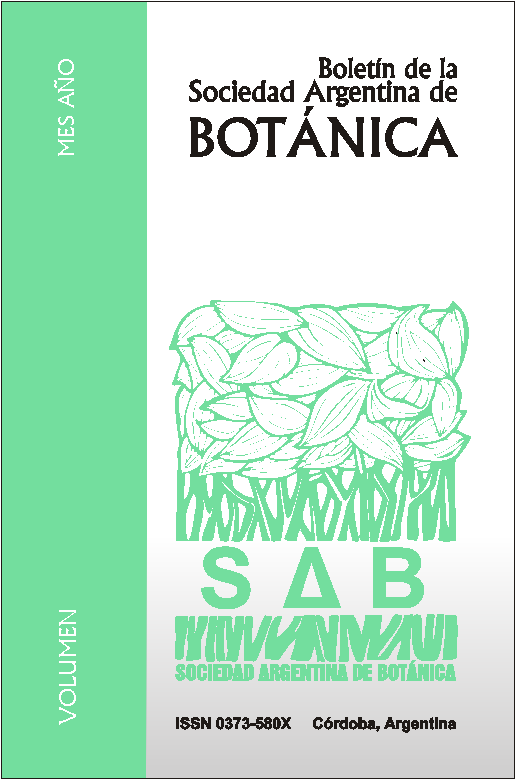Analysis of the progeny of unreduced male gametes producers and nonproducers of Turnera sidoides (Passifloraceae).
DOI:
https://doi.org/10.31055/1851.2372.v50.n1.10851Keywords:
Turnera sidoides, unreduced male gametes, polyploidy, experimental crosses.Abstract
Analysis of the progeny of unreduced male gametes producers and non-producers of Turnerasidoides (Passifloraceae). The union of 2n gametes has played an important role in the origin of polyploids of Turnera sidoides. Notwithstanding, owing to the lower rate of neopolyploid formation in this complex, their establishment constitute a critical step. Considering that the evolutionary dynamics of polyploids depends in great part on the frequency of 2n gametes production, such step would be overcome if the capacity of 2n gametes production is transmitted to the progeny. In this context, the progeny of experimental crosses between producers and non producers of 2n gametes of T. sidoides was analyzed. The results showed that the capacity of 2n gametes production would be regulated by one locus with two alleles, one of them completely dominant, being the trait recessive. The variation in the frequency of 2n and 4n gametes detected in the progeny would be attributed to differences in gene expression. The possibility of transmitting to the progeny the capacity of 2n male gametes production, would contribute to enhance the rate of polyploid formation as well as the likelihood of crossings between producers of the 2n gametes, favoring the establishment of neoplyploids in diploid populations of T. sidoidesDownloads
Downloads
How to Cite
Issue
Section
License
Provides immediate and free OPEN ACCESS to its content under the principle of making research freely available to the public, which fosters a greater exchange of global knowledge, allowing authors to maintain their copyright without restrictions.
Material published in Bol. Soc. Argent. Bot. is distributed under a Creative Commons Attribution-NonCommercial-ShareAlike 4.0 International license.









